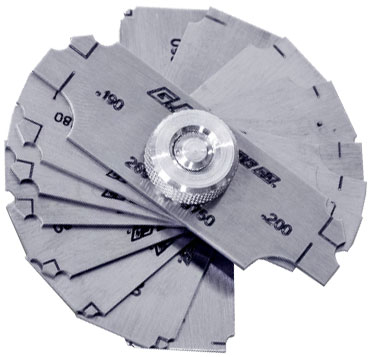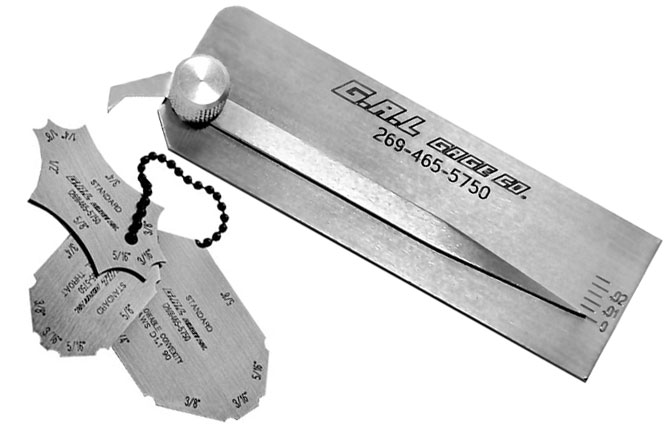Gauge Fillet Weld Basics: Finest Practices and Common Mistakes
Gauge Fillet Weld Basics: Finest Practices and Common Mistakes
Blog Article
Exploring the Benefits of Fillet Welding in Fabrication: Cost-efficient Solutions for Diverse Industries
In the realm of manufacture, the utilization of fillet welding presents an engaging suggestion for markets looking for economical services without endangering structural integrity. The advantages of fillet welding prolong past mere economic cost savings to include enhanced architectural effectiveness, convenience throughout diverse commercial applications, and the guarantee of superior toughness and longevity. As we navigate through the useful benefits that fillet welding deals, a much deeper understanding arises of exactly how this welding technique can change fabrication procedures across various markets.

Economical Solution for Construction
Fillet welding works as a cost-effective remedy in fabrication processes, giving both performance and longevity. This welding method involves signing up with two pieces of steel at an angle, creating a triangular cross-section. The simplicity of fillet welding makes it a popular option in numerous markets, including building, vehicle, and production.
One of the key benefits of fillet welding is its capability to decrease product and labor costs. By utilizing fillet welds rather than other intricate joint styles, makers can save money on products and production time. Furthermore, fillet welding calls for minimal preparation contrasted to other welding methods, further lowering fabrication costs.
Additionally, fillet welds provide superb structural stamina, guaranteeing the longevity and toughness of the fabricated elements. The triangular shape of the weld disperses stress and anxiety much more uniformly, lowering the probability of joint failing (Gauge Fillet Weld). This architectural integrity not only improves the general top quality of the completed item but likewise minimizes upkeep and repair work expenses in the long run
Improved Architectural Performance With Fillet Welding
Enhancing structural effectiveness with the application of fillet welding strategies is a crucial aspect of making certain ideal performance and toughness in made structures. Fillet welding plays a crucial duty in improving architectural performance by effectively distributing tons and anxieties throughout the bonded joints. By producing a smooth transition in between the linked elements, fillet welds aid to improve the general stamina and security of the structure.
One of the significant advantages of fillet welding in boosting architectural effectiveness is its ability to sign up with products of varying densities. This adaptability enables the building of lightweight structures without endangering on stamina. Additionally, the smooth profile of fillet welds lowers tension concentrations, which can help prevent premature failing of the welded joints.
Additionally, fillet welding enables the fabrication of complicated geometries effortlessly, giving developers with even more liberty in producing cutting-edge and efficient frameworks. By optimizing the design and placement of fillet welds, engineers can take full advantage of the architectural efficiency of made parts, eventually causing set you back financial savings and enhanced efficiency in varied industries.
Convenience in Diverse Industry Applications
With its capability to provide to a variety of material thicknesses and geometric intricacies, fillet welding stands as a flexible fabrication strategy that finds applications across varied markets. One essential area where fillet welding stands out remains in the manufacturing field, where it is utilized in the production of hefty machinery, tools, and structural elements. The auto market likewise profits from fillet welding, utilizing it in the assembly of lorry frames, chassis, and various other essential structures. In the building field, fillet welding plays a crucial duty in signing up with steel beams, columns, and other structural aspects. Furthermore, the aerospace sector depends on fillet welding for the construction of aircraft components, guaranteeing strength and toughness in crucial parts. Additionally, the oil and gas industry uses fillet welding in the building of pipes, platforms, and storage space tanks, where the robust welds offer stability and durability to these frameworks. On the whole, the flexibility of fillet welding makes it an important procedure in different markets, offering economical look at this website remedies for complicated manufacture needs.

Superior Strength and Resilience
Fillet welding plays a critical role in accomplishing these qualities due to its ability to supply significant stamina by dispersing tons equally across the bonded joint. As a result, structures produced utilizing fillet welds exhibit enhanced toughness and can hold up against significant mechanical pressures without jeopardizing their integrity.
The remarkable strength and toughness supplied by fillet welding make it an optimal option for applications in markets such as construction, auto, aerospace, and manufacturing, where architectural honesty is extremely important. By using fillet welds in fabrication, engineers and suppliers can make sure that their products satisfy rigid top quality and safety criteria while maximizing cost-effectiveness and production efficiency. Basically, the remarkable strength and durability offered by fillet welding make it a recommended welding method for producing durable and durable structures throughout diverse sectors.
Practical Advantages of Fillet Welding
Offered the demonstrated exceptional strength and durability in welded joints, the functional benefits of fillet welding expand beyond structural honesty to include efficiency and cost-effectiveness in fabrication processes. Additionally, fillet welding allows for increased productivity due to its versatility in signing up with different types of materials, thicknesses, and forms. On the Visit This Link whole, the functional benefits of fillet welding make it an important selection for business seeking cost-effective and efficient options in fabrication.
Conclusion
In final thought, fillet welding offers a cost-effective remedy for construction, providing boosted architectural performance, convenience in diverse sector applications, superior strength, and longevity. The useful benefits of fillet welding make it a favored choice for various manufacture projects throughout different sectors. Its ability to effectively join materials while maintaining architectural honesty makes it a useful method for guaranteeing top notch and dependable lead to welding applications.

Additionally, fillet welding needs marginal prep work contrasted to various other welding techniques, further reducing construction costs.

Offered the shown remarkable toughness and durability in bonded joints, the functional benefits of fillet welding prolong past architectural honesty to encompass efficiency and cost-effectiveness in manufacture processes - Gauge Fillet home Weld.In conclusion, fillet welding provides a cost-efficient remedy for construction, providing improved architectural performance, versatility in varied sector applications, exceptional strength, and sturdiness
Report this page